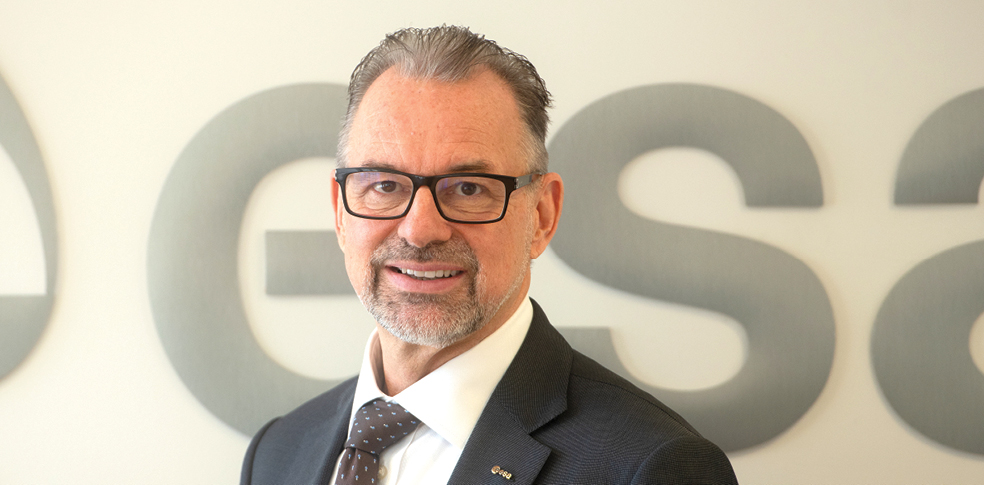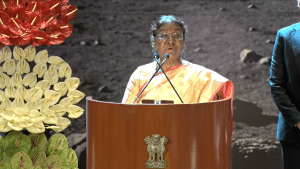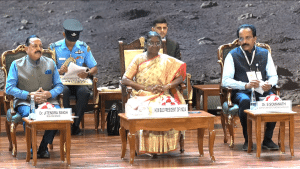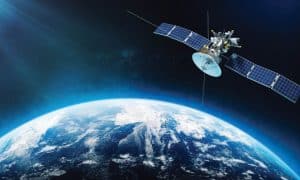About 8o% of the data used in meteorological models and climate models is based on satellite data, making it very important to understand climate change. This provides an exemplary contribution to the planet, helping us to really chalk out a sustainable plan ahead.
The European Space Agency (ESA) disseminates over 35O terabytes of Sentinel and Earth explorer mission data across the world every single day.
It’s the largest volume of Earth Observation (EO) data that is being disseminated for general use. But we need to do much more to promote the use of this data and get users engaged that are outside of the classical space or EO domain.
Users in domains as diverse as agriculture, tourism, transport and the shipping industry are dependent on this data. Yet there’s still much more to be done because of the wealth of valuable data that can be converted into services and create new businesses and new opportunities from an economic perspective.
This is one of the reasons why we created the `Accelerators’ programme. There are a number of ‘accelerators’ ranging from space for a green future to rapid and resilient crisis response, which really is meant to be to team up with other organizations whose job it is to decarbonize the economy where space may make a small contribution, but an important one.
Zero Debris Charter
Our sustainability efforts are not only limited to Earth. Space debris is becoming a bigger issue day by day as satellites stationed in orbit that become defunct pollute space for newer, operational satellites.
We would like to make sure that at the end of its life you bring back the satellite from its orbit and therefore do not pollute space with old satellites that are out of service and defunct.
Those who sign up to the Charter commit to taking the satellite out of its orbit at end of life.
Our job is to develop a mechanism that de-orbits the satellite when it reaches end of life, therefore making sure that it can burn up in the atmosphere and disappear from orbit.
We are talking with industry, national space agencies as well as international partners in an effort to convince them to adhere to the same principles and sign up to the Charter.
Commercializing EO
We have gone a long way in EO to utilize the potential, but we have a much longer way to go. This sector is just picking up from a commercial perspective as we are seeing a few constellations of micro and nanosatellites being established now.
This promises very good economic growth in the near future. In the last decade, we saw more than io% growth in turnover for these commercial companies, which is going to continue at the same rate or more.
Buying a service from industry and letting industry take initiatives is fundamental because it starts a paradigm shift where we apply a system that allows industry to be much more flexible and innovative faster, while having the freedom to choose what kind of technical solution to develop.
This was successfully implemented through the commercialization programme in the United States, out of which SpaceX was developing on one side, and launching rockets on the other. Europe is moving in a very similar direction.
“Europe would like to develop greater autonomy and design and build more domestically in order to contribute to a wider international space architecture. International collaboration is extremely important, especially when working in Earth observation.”
Collaboration in Space
It is clear that in exploration missions, we will always work with international partners. We have had a good relationship and good cooperation strategies with NASA for decades now.
We have also had very good relations with Japan, India, and many other countries for quite some time. But it’s time to reinforce these relationships and say that we really are one partner, an important one in a wider international cooperative effort.
Europe would like to develop greater autonomy and design and build more domestically in order to contribute to a wider international space architecture. International collaboration is extremely important, especially when working in Earth observation.
Sharing and establishing joint projects where contribution is the key. To address climate change with satellite data, it can be essential to understand climate patterns and therefore mitigate and adapt accordingly.
This gives an accurate picture of the space sector and technology being an important factor to change the planet for the better.
Disclaimer: Views Expressed are Author's Own. Geospatial World May or May Not Endorse it








